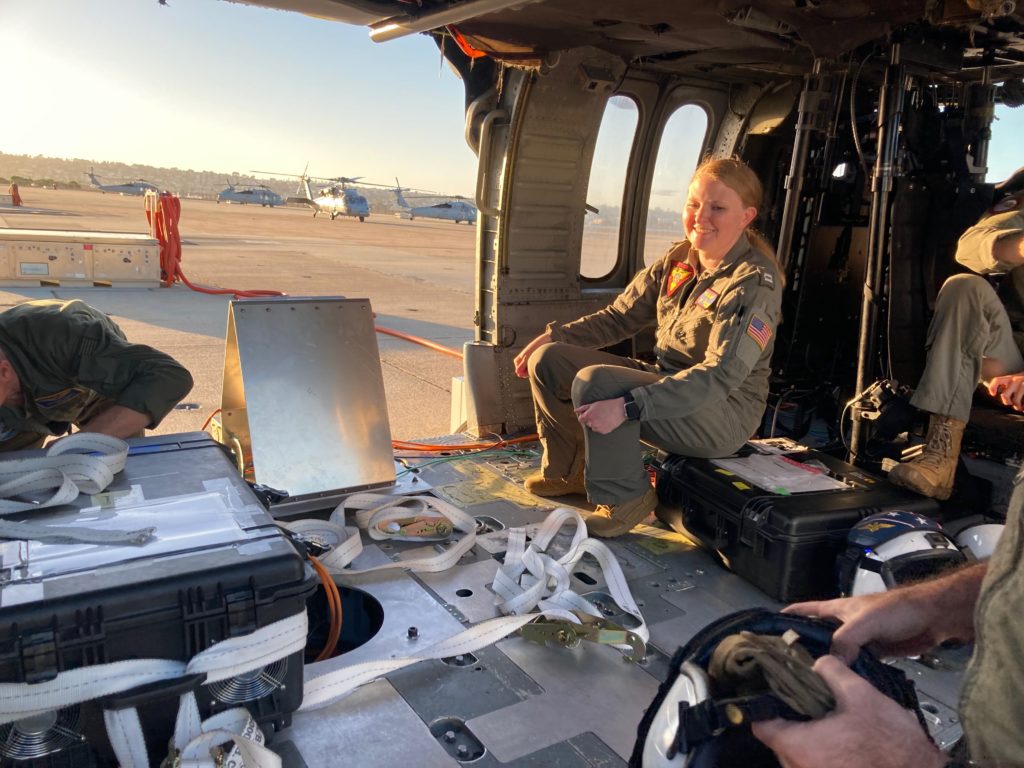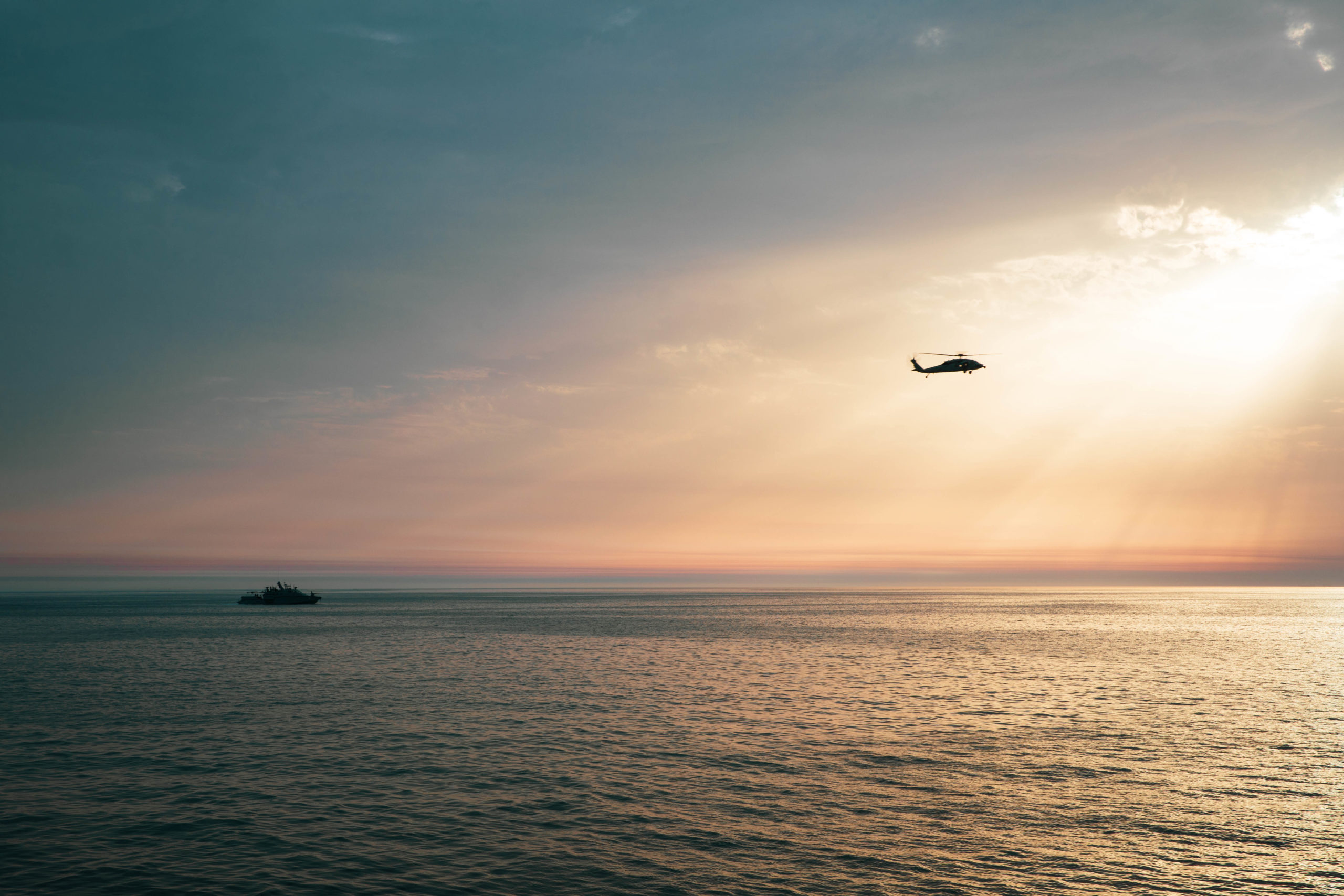By Robbin Laird
In writing our book on the maritime kill web, a key point we emphasized was that payload innovation was a key driver to enhanced and viable combat capability. Rather than focusing force design on next generation platforms, a key focus now was to focus on rapid insertion of payloads and their innovation to create the desired combat effects.
When I visited the Naval Aviation Warfighting Center (NAWDC) in October 2024, my discussions with the MISR community underscored how they were addressing this opportunity and challenge. MISR stands for Maritime ISR and when I visited NAWDC the last time in 2020, they were focused in their core exercise called Resolute Hunter on how ISR collectors could support tactical decision makers more effectively and rapidly.
Now they were focused on how the platforms and payloads the Navy and their joint force partners had access to could provide the kind of surveillance and reconnaissance eyes to the decision maker brains at the tactical edge.
With such a focus, it seems evident that training was not just about shaping rote muscle memory, but it was about how innovation at the tactical edge could be enhanced.
A measure of the change is how the MISR team in Resolute Hunter now invites external participants to introduce new payloads into the training environment. This could drive much more rapid innovation in the ready force if acquisition approaches can catch up to what a training driven innovation regime can deliver to that force.
During my visit I met with a team from Lockheed Martin who were working with NAWDC on a payload which was onboard on Romeo and Sierra helicopters to add to the surveillance and reconnaissance data which could be available to the force.
After my return from NAWDC, I continued my discussion with a member of the Lockheed engineering team, Richard Whitfield. He is an experienced naval officer who retired in 2022 from the U.S. Navy, He now is a principal systems engineer at Lockheed Martin working research and development on the Romeo and Sierra.
I asked him how they developed the approach to working with NAWDC on shaping payloads for more rapid innovation in the operational force.

He noted: “What we started doing a year and a half ago was looking at how we conducted our research and development inside the Lockheed Martin’s naval helicopter program. We wanted to include the flight suits on the flight line in the front side of the systems engineering where they get more feedback more often at the very beginning.
“One of the most expensive things in R and D is the actual flight time on the airfield. But if you develop a payload and can get input early on you can provide usable capability to the warfighter more rapidly and cost effectively. So the idea is, go from concept to a prototype in a box within 15 to 18 months. At the nine-month mark, if it’s not working out, we can scrap it, and nobody’s worse for the effort. And at the 15-to-18-month mark, the Navy is hopefully seen enough to determine that they want to invest more in it or shelf it.
“This allows for shaping rapid deployment kit that we can productionize, where it is either a roll on roll off capability on the helicopter or integrated into the helicopter’s combat system which we put into the next upgrade of the system.”
Whitfield underscored that in his experience in the Navy, the Romeo and Sierra communities are an effects-based community and as such were very open to the kind of payload innovation which a kill web force leveraged and optimized.
He added: “The helicopter is a truck. As such, they are easy to test things on. We just need to find more effective ways to do so.”
And leveraging training time to deliver new combat capabilities via payload innovations is certainly an idea whose time has come.
As Dr. Melissa Rhoads, Director ACT, Accelerating C2 Capability Transition, Rotary Mission Systems, Lockheed Martin highlighted regarding the work described by Whitfield:
“What Richard Whitfield has been doing with MISR is an outstanding exemplar of our focus on iterative development through collaborative experimentation. Through this partnership we’ve been able to bring capabilities that cross domains and demonstrate feasibility of new concepts. This allows us to get valuable customer feedback and better prioritize the capabilities that will have the greatest impact, as well as gain insight into some longer-term needs. It is exciting to be accelerating capability transition through collaboration and partnership.”
Featured Photo: (May 6, 2020) A Sikorsky SH-60S Sea Hawk, attached to Helicopter Sea Combat Squadron (HSC) 26, conducts flight operations during a Photoex. HSC 26 is deployed to the U.S. 5th Fleet area of operations in support of naval operations to ensure maritime stability and security in the Central Region, connecting the Mediterranean and Pacific through the Western Indian Ocean and three critical choke points to the free flow of global commerce. (U.S. Army photo by Spc. Christopher Cameron)





